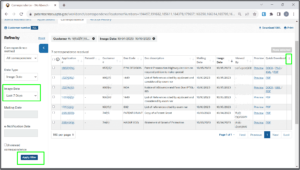(Update: No, folks, today is not the day. Sorry about that. The posting quoted below was an automatic, scheduled posting that I had scheduled many months ago. But see this Federal Register notice dated September 12, 2023 in which the USPTO says that October 7, 2023 is not the day. Instead, this change will happen at some unspecified time in “the spring or early summer of 2024”.)
Yes, folks, today is the day. Starting today, you only get three months to respond to a USPTO post-reg trademark Office Action instead of the usual six months. I told you all about this back on October 12, 2022 (blog article) and on December 3, 2022 (blog article). This article hopefully answers some of your questions about this change.
Does this affect the response period for post-reg Office Actions mailed yesterday or before? No. This affects only the response period for post-reg Office Actions mailed today (Saturday, October 7, 2023) or after today.
What if I need more than three months? If you need more than three months, you can purchase the remaining three months (restoring the response period to the statutory six months) by paying $125.
So this works just like extensions of time in USPTO patent cases? No! It is quite different, in many ways, as this table details.
|
Patent |
Trademark |
| small entity or micro costs less? |
yes |
no |
| you can get one, two, or three months of extension? (or four or five months for certain steps) |
yes you get to pick |
no, you can only get three months of extension, no more and no less |
| when you must pay? |
you may pay in arrears |
You must pay before the three months has run out |
| how much money? |
$55 to $3160 depending on entity size and number of months of extension |
$125 |
Madrid cases? No, this does not apply to cases with a 66a filing basis (US designations from international trademark registrations). Those cases will continue to get the full statutory six-month response period.
Gotchas? Yes, there will be gotchas. If you respond within the three-month period, but if the post-reg person says you have failed to “respond to all issues”, whatever that means, then your case will have gone abandoned and you will have to petition to revive.
Suppose you respond within the three-month period, and you supposedly fail to “respond to all issues”, and there is still some time left before the end of the three-month period, and the post-reg person delivers this bad news to you before the end of the three-month period. In such a case, the post-reg person will let you know that to avoid abandonment, you can pay the $125 fee to purchase the remaining three months of response time.
As alert reader Michael Brown points out, the EA might choose to give you a 30-day “mulligan” if the EA decides that your response that failed to be “complete” was nonetheless “substantially complete”. See blog article.


